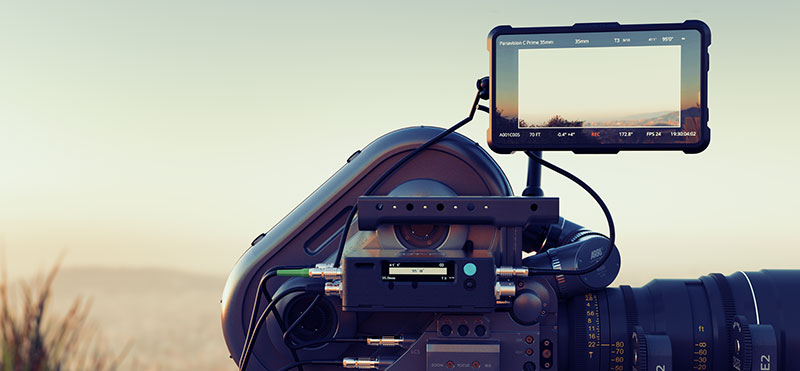The LDT-F1’s on-set monitoring options help align film production with the digital film-making experience, combined with DCS’ lens data recording system, all in one package.

Digital Camera Systems (DCS) has released the LDT-F1 video processing unit to address the challenges of traditional celluloid workflows. DCS’ on-set monitoring options help align film production with the digital film-making experience, combined with DCS’ lens data recording system, all in one package.
DCS are specialists in developing simple techniques for capturing frame-by-frame lens data from any type of lens. In traditional film production, filmmakers and crew face numerous issues that hinder efficiency and quick access to critical information when compared with digital workflows. The lack of video overlay capabilities and the on-going problem of the ‘squeezed’ image captured on film due to anamorphic lenses make it difficult to use celluloid cameras as on-set monitors, or to integrate them directly into digital workflows.
The absence of customisable framelines often leads to guesswork for directors, DOPs and other crew members, slowing down the on-set decision-making process and causing delays in making creative choices. Also, access to information such as timecodes, clip details and camera file renaming has been limited to the people physically present near the camera, leaving others dependent on the camera department.
As an answer to these existing problems, the LDT-F1 takes in the video tap from the camera and processes the feed, applying a digital overlay of live lens and camera information, customisable framelines and a custom desqueeze option for anamorphic lenses.

These features are specifically designed to give the production team real-time access to important information, helping them to make informed decisions and perform their tasks more precisely and creatively. With the LDT-F1, celluloid film production becomes efficient and collaborative, changing the way filmmakers capture their vision and approach the creative process.
“We have introduced the LDT-F1 to bridge the gap between celluloid and digital workflows in film production,” said Gary Keller, Operations Manager at DCS. "By giving instant access to critical data like live lens info, footage counter and shutter angle right on the monitor, it eliminates guesswork on set. The built-in framelines and desqueeze features allow camera ops, DOPs and directors see their shots clearly, easing the creative process. With the LDT-F1, anyone in the filmmaking team who can see a monitor now has the power to access the information they need, when they need it."
LDT-F1 Features for Celluloid Film Production
The LDT-F1 applies a custom ratio de-squeeze for the video tap when using anamorphic lenses, displaying an accurate image on a production’s on-set monitors. This allows filmmakers to view captured images in their intended aspect ratios, reducing uncertainty.

Directors, DOPs, and other team members can also use the LDT-F1 to access real-time customisable framelines for precise composition evaluation and informed decision-making on set. This feature eliminates the need for guesswork, speeding up other processes and improving efficiency during filming.
The LDT-F1 displays other immediate information as well, such as timecodes, clip details and camera file renaming. This output avoids having to rely on physical presence next to the camera, improving communication and getting workflows underway on set more quickly.
Equally important, the LDT-F1 records and captures frame-by-frame lens metadata that facilitates post-production and VFX work. Lens data is necessary for invisible integration of composited elements and for enhancing the overall quality of visual effects.
The LDT-F1 is compatible with all major film cameras, making it versatile and adaptable in various production setups. It integrates with well-known lens control systems such as Preston, C-Force motors and C-Motion, ensuring flexibility and convenience for filmmakers.
DCS rental and purchase options are available for the LDT-F1. dcs.film




